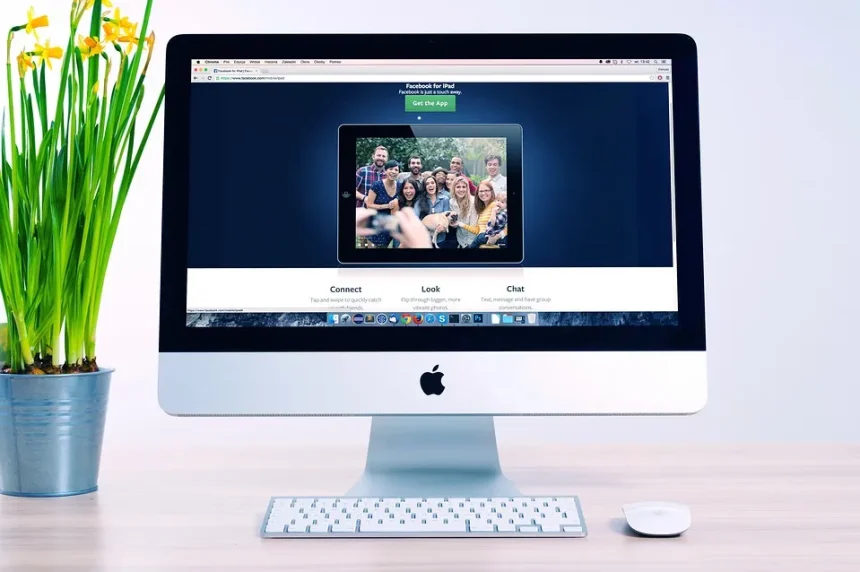In traditional organizational structures, departments often operate in isolation, focusing on their own tasks and goals without much interaction with other teams. This siloed approach can lead to inefficiencies, miscommunication, and a lack of synergy, ultimately affecting overall productivity and innovation. Real-time collaboration tools offer a transformative solution to this issue by breaking down barriers between teams and fostering a more integrated and cooperative work environment.
These tools facilitate seamless communication and collaboration across different departments, enabling teams to work together more effectively and align their efforts towards common objectives. By creating a more interconnected workplace, real-time collaboration tools help organizations overcome the limitations of silos, leading to improved coordination, faster decision-making, and enhanced overall performance. In this article, we will explore how real-time collaboration tools break down silos and create synergy across teams, and the benefits this integration brings to organizations.
Understanding the Silo Effect
The “silo effect” describes a situation where departments or teams within an organization operate in isolation from one another. This separation can lead to a range of issues:
- Lack of Communication: Teams working in silos may have limited communication with other departments, resulting in missed opportunities for collaboration and knowledge sharing.
- Duplicated Efforts: Without visibility into the work being done by other teams, departments may inadvertently duplicate efforts or work on similar problems independently, leading to wasted resources.
- Inconsistent Goals: Teams may pursue goals that are misaligned with the overall objectives of the organization, leading to fragmented efforts and reduced effectiveness.
- Slow Decision-Making: Coordination between departments can be slow and cumbersome, delaying decision-making and project progress.
- Reduced Innovation: The lack of cross-departmental interaction can stifle creativity and limit the potential for innovative solutions that arise from diverse perspectives.
Breaking down these silos requires a strategic approach that fosters communication, collaboration, and alignment across teams. Real-time collaboration tools are instrumental in achieving this integration by providing platforms that facilitate seamless interaction and shared goals.
How Real-Time Collaboration Tools Break Down Silos
Real-time collaboration tools are designed to enhance communication and coordination across teams, making it easier for departments to work together and align their efforts. Here are some key ways these tools help break down silos:
1. Centralized Communication Channels
Real-time collaboration tools provide centralized communication platforms where team members from different departments can interact, share information, and collaborate on projects. This centralization helps eliminate the fragmentation caused by disparate communication methods.
- Unified Messaging Platforms: Tools like Slack, Microsoft Teams, and Google Chat offer unified messaging platforms where employees from various departments can join channels or groups related to specific projects or topics. This ensures that relevant information is shared with all necessary parties and reduces the risk of important updates being overlooked.
- Real-Time Updates: By providing real-time updates, these platforms ensure that everyone involved in a project is informed of changes and developments as they happen. This helps maintain alignment and coordination across different teams.
- Cross-Departmental Collaboration: Centralized communication channels facilitate collaboration between departments by allowing team members to easily reach out to colleagues in other areas of the organization. This promotes a more integrated approach to problem-solving and decision-making.
2. Shared Project Management Tools
Real-time collaboration tools often integrate with project management platforms that allow teams to track progress, assign tasks, and manage deadlines collectively. This visibility into project status helps ensure that all departments are working towards the same goals and are aware of each other’s contributions.
- Transparent Task Tracking: Tools like Asana, Trello, and Monday.com provide transparency into task assignments, progress, and deadlines. This visibility helps teams coordinate their efforts and avoid duplicating work or missing important milestones.
- Collaborative Workspaces: Project management tools often include shared workspaces where team members can collaborate on documents, provide feedback, and discuss project-related issues. This collaborative environment helps break down silos by making it easier for teams to work together and stay aligned.
- Integrated Workflows: Many project management tools integrate with other collaboration platforms, allowing teams to seamlessly transition between communication, task management, and document sharing. This integration helps streamline workflows and ensures that all departments are working in harmony.
3. Cross-Functional Teams
Real-time collaboration tools enable the formation of cross-functional teams, where members from different departments come together to work on specific projects or initiatives. This approach fosters collaboration and ensures that diverse perspectives are considered.
- Project-Based Teams: By bringing together team members from various departments to work on a specific project, organizations can leverage the expertise and insights of individuals with different backgrounds. This cross-functional approach helps address complex challenges and drive innovation.
- Collaborative Brainstorming: Real-time collaboration tools facilitate brainstorming sessions where cross-functional teams can contribute ideas and collaborate in real time. This collaborative environment encourages creativity and allows for the rapid generation of innovative solutions.
- Shared Objectives: Cross-functional teams work towards shared objectives, ensuring that all departments are aligned and focused on common goals. This alignment helps break down silos and fosters a more cohesive approach to achieving organizational targets.
4. Integrated Document and File Sharing
Real-time collaboration tools often include features for document and file sharing, making it easy for teams to access and collaborate on shared resources. This integration helps eliminate barriers related to file access and version control.
- Real-Time Document Collaboration: Platforms like Google Docs, Microsoft Office 365, and Dropbox allow multiple users to work on the same document simultaneously. This real-time collaboration ensures that everyone has access to the most up-to-date version of a file and can contribute to its development.
- Centralized Document Repositories: These tools also provide centralized repositories where documents and files can be stored and accessed by team members from different departments. This centralized access helps prevent issues related to file duplication or loss.
- Seamless Integration: Many document and file-sharing tools integrate with communication and project management platforms, allowing teams to easily share and collaborate on documents within their existing workflows.
5. Enhanced Visibility and Accountability
Real-time collaboration tools provide visibility into the activities and contributions of different teams, helping to ensure accountability and alignment with organizational goals.
- Activity Tracking: Tools often include features that track and display the activities of team members, such as task completion, project updates, and communication exchanges. This visibility helps ensure that all teams are on track and working towards common objectives.
- Performance Metrics: Real-time collaboration tools may also provide performance metrics and reports that help teams assess their progress and identify areas for improvement. This data-driven approach helps teams stay accountable and make informed decisions.
- Feedback Mechanisms: Integrated feedback mechanisms allow team members to provide input and assess the contributions of others. This feedback helps ensure that all departments are aligned and working together effectively.
6. Building a Collaborative Culture
Implementing real-time collaboration tools helps build a culture of collaboration and mutual support across the organization. This culture encourages teams to work together, share knowledge, and support one another in achieving common goals.
- Encouraging Open Communication: By providing platforms for open communication, real-time collaboration tools help create a culture where team members feel comfortable sharing ideas, asking questions, and providing feedback. This openness fosters a collaborative environment where everyone’s input is valued.
- Promoting Team Engagement: Real-time tools facilitate regular interactions and engagement among team members, helping to build strong relationships and a sense of camaraderie. This engagement enhances collaboration and ensures that all teams are working together towards shared objectives.
- Recognizing Contributions: These tools also make it easier to recognize and celebrate the contributions of team members from different departments. Acknowledging achievements and successes fosters a positive and collaborative work environment.
Case Study: Breaking Down Silos with Real-Time Collaboration
Consider a large multinational corporation with distinct departments for marketing, sales, product development, and customer service. Historically, these departments operated in silos, leading to inefficiencies and misalignment.
By implementing real-time collaboration tools, such as Slack for communication, Asana for project management, and Google Drive for document sharing, the company achieved several key benefits:
- Improved Coordination: Cross-departmental channels in Slack allowed teams to communicate seamlessly, share updates, and collaborate on projects in real time. This improved coordination and alignment across departments.
- Streamlined Project Management: Asana provided a centralized platform for tracking project progress, assigning tasks, and managing deadlines. Teams could easily see each other’s contributions and stay on top of project milestones.
- Enhanced Document Collaboration: Google Drive facilitated real-time collaboration on shared documents, ensuring that all departments had access to the latest versions and could contribute to the development of key resources.
- Increased Efficiency: The integration of these tools helped eliminate duplication of efforts, reduced communication delays, and fostered a more collaborative and efficient work environment.
Conclusion: Real-Time Collaboration Tools as Catalysts for Synergy
Breaking down organizational silos is crucial for enhancing collaboration, improving efficiency, and driving overall performance. Real-time collaboration tools play a pivotal role in achieving this integration by providing centralized communication, shared project management, and seamless document collaboration. By fostering a culture of collaboration and alignment, these tools help create a more cohesive and synergistic work environment where teams can work together effectively towards common goals. As organizations continue to navigate complex and dynamic business landscapes, leveraging real-time collaboration tools will be essential for breaking down barriers, improving coordination, and driving success.
To learn more about our vision stay up to date with latest news and trends and how we’re making a difference, We invite you to OC-B by Oort X Media.




